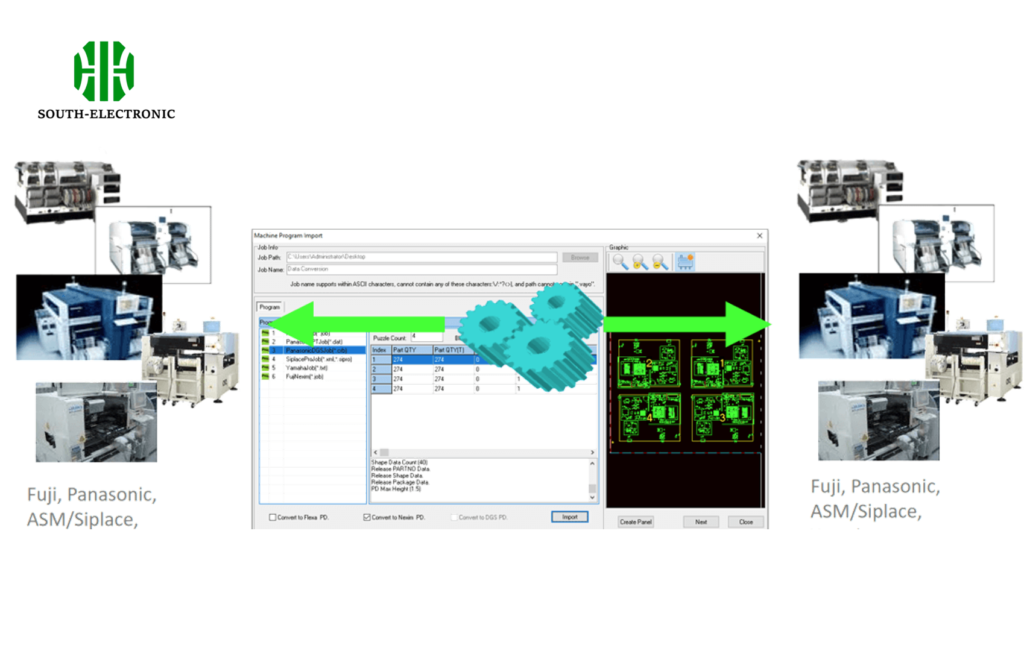What is SMT Programming?
Surface Mount Technology (SMT) is a technique used in electronics manufacturing to put components directly onto the surface of a PCB without drilling holes. SMT programming is the process of setting up an SMT machine to automate these placements, including the arrangement of feeders, component pick-up, and the order of placement.
SMT Programming Process
An SMT machine operates in a highly coordinated way. Programming involves:
- Arranging SMT feeders to ensure components are in the correct position.
- Setting up the pick-up order for components.
- Defining the placement order for the Surface Mount Devices (SMDs) on the PCB.

SMT Programming in Action
This picture shows how an SMT machine puts little parts on a PCB. Every move, from the feeders to the final placement, is controlled by SMT programming.
What is an SMT Programmer?
A dude who does SMT programming has to get the software ready and keep it working for the SMT machines. That means setting up the machine’s settings and making sure the parts go on the board right.

Responsibilities of an SMT Programmer
- Creating Production Programs: The programmer configures the machine based on the design and production needs.
- Testing and Optimizing: Before production begins, the program must be tested to ensure accuracy.
- Troubleshooting: When issues arise, the programmer analyzes and corrects problems in the setup.
SMT Programming Workflow
| Step | Description |
|---|---|
| Step 1: Setup | Load the design file, arrange feeders, and configure the machine. |
| Step 2: Testing | Test the program on a small run to ensure placement accuracy. |
| Step 3: Optimization | Adjust parameters based on feedback from the test run. |
| Step 4: Production | Run full production after all tests are successful. |
| Step 5: Maintenance | Monitor the process and make adjustments as needed. |
SMT Programming Software: Tools of the Trade

To execute SMT programming efficiently, various software tools are used. These tools help translate PCB designs into machine-readable formats, optimizing the placement process. Popular SMT programming software includes:
- Yamaha YsUP: A software tool for programming YAMAHA SMT machines.
- Panasonic NPM: Software for high-precision programming of Panasonic SMT machines.
- Siemens Sinamics: Used for high-volume production lines.
Comparison of SMT Programming Software
| Software | Features | Best For |
|---|---|---|
| Yamaha YsUP | Easy integration, high-speed performance | Medium to large production |
| Panasonic NPM | Precision placement, dual-lane capability | High-precision needs |
| Siemens Sinamics | High volume, low error rate | Large-scale manufacturers |
Evolution of SMT Programming: From Manual to Automated
SMT programming has come a long way. In the beginning, engineers had to place components by hand. But as electronics got more complicated and people wanted things faster, the process became automated.
Key Milestones in SMT Programming Evolution
- 1980s: SMT machines were introduced, enabling faster production of PCBs.
- 2000s: Software advancements allowed for greater precision and reduced human error.
- 2020s: Machine learning and AI are now being integrated into SMT programming to further optimize production.
As software and automation continue to advance, the future of SMT programming looks bright. It will continue to be a critical part of the electronics industry.



